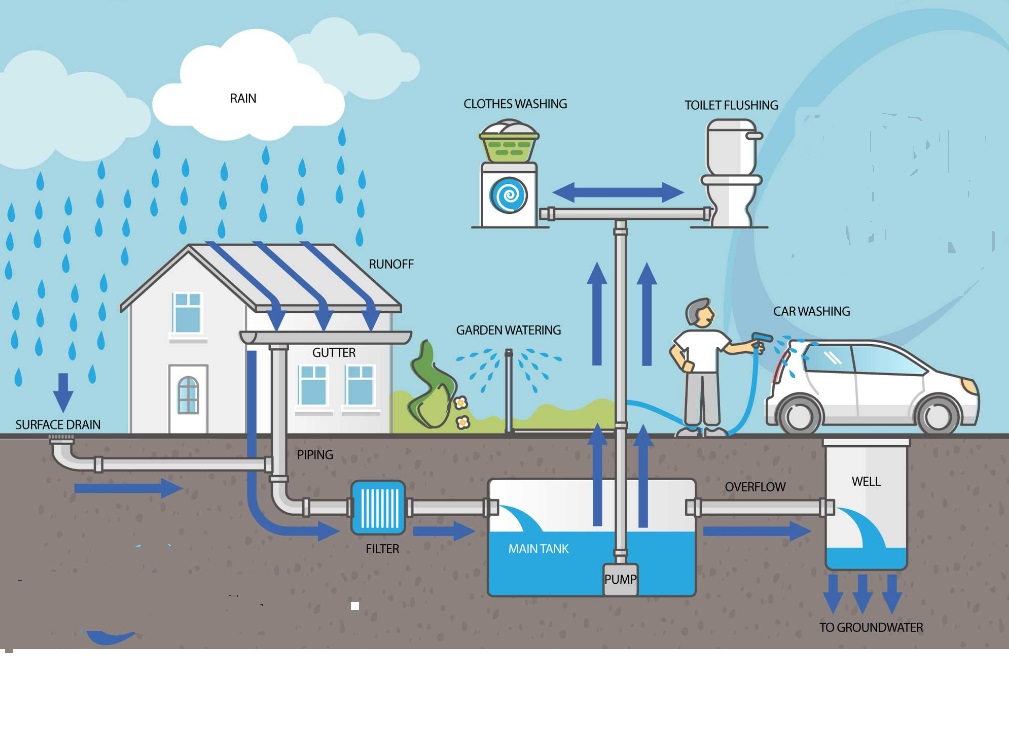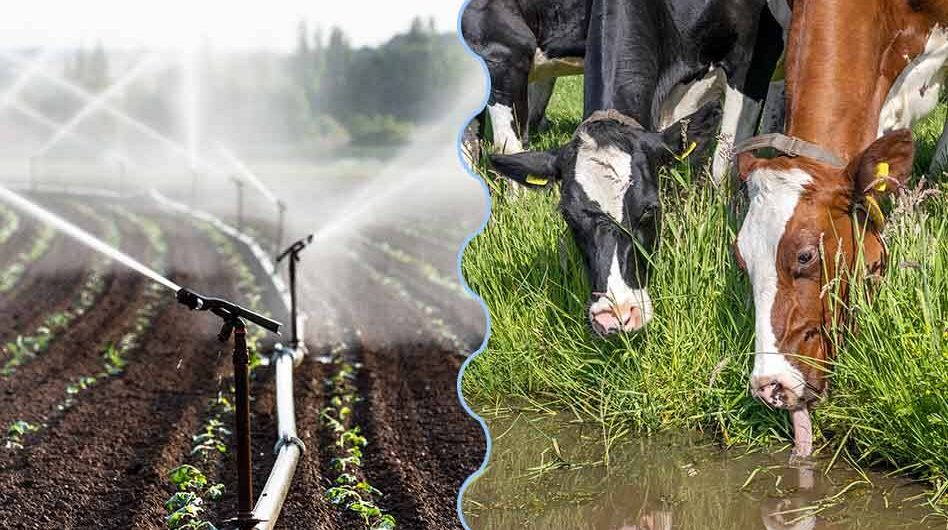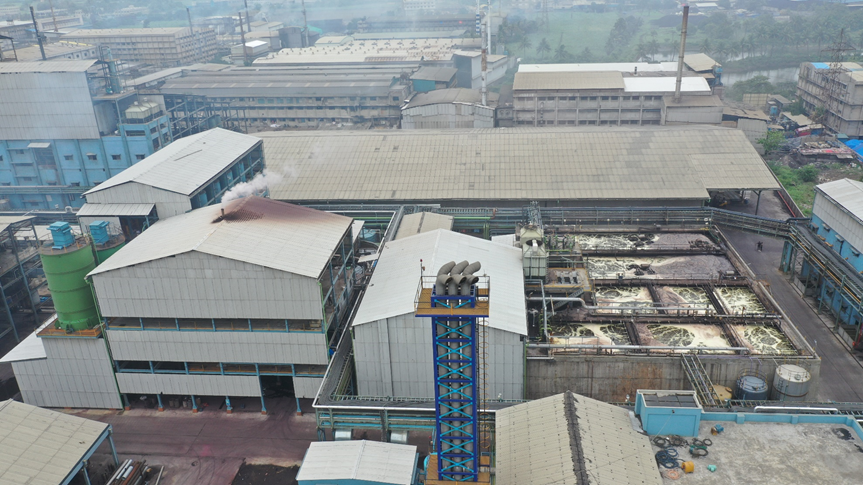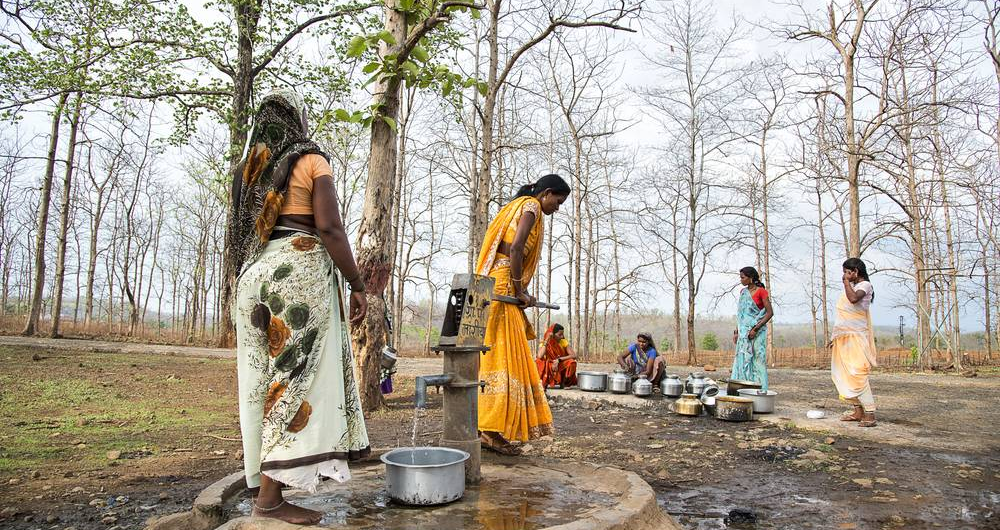By- Dr Mayur J. Kapadia
Trainer, Writer, Editor & Former AGM, Quality Control Dept, GNFC Ltd, Bharuch, Gujarat.
Email : mjkapadia61@gmail.com
Water : A Stressed Resource
Water is fundamental to our existence and a finite resource. Water underpins all drivers of growth – be it agricultural production, energy generation, industry or manufacturing. The soaring population growth, urbanization, agricultural farming and climate change have put much more pressure on water source. Agriculture accounts for roughly three-quarters of global freshwater withdrawals, and agriculture-related nutrients are polluting watersheds. Water leakages can contribute up to 60% of distributed water loss representing gross operational inefficiencies. The global thirst for water has been intensified by the compounding effects of all these factors.
Water utilities are, thus, challenged to provide clean and safe drinking water when faced with aging, costly infrastructure. When not well managed, competing interests for water has the potential to cause wars and leave sectors economically vulnerable. United Nations (UN), therefore, aptly drew much attention to water in its Sustainable Development Goals (SDG) with SDG 6 : CLEAN WATER AND SANITATION, which is concerned with improving water quality and water-use efficiency, as well as integrating water resources management.
Linear Vs Circular Water Economy
The common Linear Economy concept leaves the emission and waste by-products largely unconsidered, despite the fact that some generation of economic ‘bads’ is taking place instead of useful ‘goods’. Furthermore, some ‘goods’ are wasted rather than consumed. In simple words, linear economy of water follows the approach of ‘take – make – use – discharge’. Here, the wastewater is treated only to be returned to water bodies as per prescribed norms of pollution control authorities. Fresh water is, then, extracted again for treatment before being used for productive purposes. This can no longer sustain our water resources as it is costly, energy-intensive and environmentally unsound.
The relatively uncommon Circular Economy concept seeks to minimize the useless emissions and wastes by reappropriating them as potential resources. For this purpose, Circular Economy tries to optimize the production, distribution, and consumption of goods and services to avoid emission and waste by-products in the first place. This approach embraces the idea of circularity by design of the economic activity rather than as an afterthought. It acknowledges the negative implications of a linear economic model. In other words, the circular water economy works on the principle of ‘take – make – use – reuse / recycle / restore’.
Nature’s Water Cycle
The water cycle or the hydrological cycle existing in nature is a biogeochemical cycle wherein the water continuously moves above and below the surface of the Earth. The mass of water on Earth remains fairly constant over time but the partitioning of the water into the major reservoirs of ice, fresh water, saline water and atmospheric water is variable depending on a wide range of climatic variables. Nature purifies the water through various physical processes like evaporation, transpiration, condensation, precipitation, infiltration. This cycle is an evidence that water is circular. However, anthropogenic activities over the last hundred years have disrupted the circulation of the earth’s water stock. The greenhouse gas effect of climate change has disrupted the hydrological cycle through elevated moisture, evaporation and temperature, leading to melting of snow, rising of sea levels and an uneven distribution of rainfall patterns.
Circular Economy of Water
Introduced by Pearce and Turner in “Economics of Natural Resources and the Environment” in 1990, circular economy is further developed by the Ellen MacArthur Foundation since 2010 in multiple sectors such as waste management, sustainable design and construction, food production, indicator development, etc. The principles of Circular Water Economy are founded on designing out waste and pollution. This concept endeavours to convert today’s wastes into tomorrow’s resources that yield economic, social and environmental benefits. Circular economy tries to keep the water in circulation for longer duration to reduce the burden on natural systems, while encouraging regeneration. Its goal is to decouple the economic growth from negative externalities on environmental systems and resource use.
Strategies to aim Circularity of Water
Circular economy offers a path in reshaping how water systems operate. The strategy followed to achieve circularity in water sector is the 6R’s strategy : Reduce, Reuse, Recycle, Reclaim, Recover and Restore. Circularity applies to any ONE or SOME or ALL of these 6R’s. Nevertheless, full circularity is a holistic philosophy which applies to all 6R’s in order to close the water, energy and nutrient outflows by integrating the relevant sectors that create mutual benefit along the extended value chain.
Reduce : Decrease the consumption of freshwater. This can be accomplished by increasing awareness in the consumer and reducing leakages. Reduction in sewage can be accomplished by consumer awareness and developing responsible behaviour in industries and organizations. Reduction in water consumption is possible by installing efficient plumbing fixtures / appliances e.g. dual flush system in place of conventional flushing . Demand management using smart meters can also help in reducing water consumption. All these attempts ultimately will reduce the generation of waste water.
Reuse : The use of wastewater in its crude form. It involves cascading use of used water in its crude form for multiple purposes so as to reduce the freshwater demand. Water may be used inside the same loop of use or outside the loop.
Recycle : Use of treated wastewater within the same loop or in the same process where it is generated. The waste water here may be partially treated for its recycling in the either the same loop of the same process.
Reclaim : Use of treated wastewater and its use outside the loop or process. To make the water reusable in other processes, the water is given deeper treatment than that given for Recycle. With the rapid development and improvement in treatment technologies, wastewater can be treated to a quality equivalent to potable water quality. The extent of reclamation depends on the pollution status of the wastewater and the purpose for which reclaimed water is used.
Recover : Extraction of valuable resources from wastewater. Precious material, though in minute quantity, getting diverted into waste stream can be recovered by comprehensive treatment. On other hand, good quality water is generated for recycling. Energy may also be recovered from the waste water.
Restore : Replenish water resources like ground water, rivers, lakes through artificial interventions. Some of the examples of this strategy are recharge of the aquifer, harvesting of rain water or rejuvenation of water bodies. It enhances the availability of water in the dry season and also to maintain the water balance in the region.
Ways to achieve Circular Water Economy
Circular economy is a Challenge on one side and an Opportunity on the other.
Depending upon the water collection and distribution system, different approaches need to be followed to increase the potential for water conservation and reuse, increase the resiliency of the water infrastructure network, and reduce the cost of infrastructure replacement.
Green infrastructure (nature-based solutions)
This is a kind of decentralized alternative to circularity of water for accomplishing ‘Restore’ of the 6 R’s. Its role in providing water services is well understood, but undervalued. Rainwater harvesting has reduced the cost of damages caused by floods, demand for water and water production costs. Maintaining watersheds through forest management and wetland restoration have also been successful circular solutions. Green infrastructure can unlock the potential of the natural environment. It can provide natural means of water treatment through filtration, enhance storage through aquifers, reduce stormwater run-off and help recreation of green spaces.
Cascading
Cascading is a sequence of consecutive uses of water for different purposes. Water (whether untreated or treated) can be used again and again in multiple stages of industrial and domestic processes. For instance, steam used for energy production can be used as condensate, then for cooling, again for cleaning, and subsequently for flushing toilets. Once treated, the same water can be used for irrigation as well. Cascading combines multiple strategies of circularity such as ‘Recycle’, ‘Reuse’ and ‘Recover’. It ideally represents water in a circular model because it perfectly reflects the multiple states of water and is based on multiple interrelated uses.
To achieve Cascading, multiple solutions involving different strategies are integrated and combined. Cascading works best under proximity, when consecutive uses are located close to one another and with technologies working in synergy. In an ideal Circular Economy world, water is cascaded infinitely, as in the natural water cycle of the Earth.
Desalination & Reverse Osmosis
Desalination is a process to remove salt in general and other constituents from waste water by either Thermal process (Evaporation), Membrane Desalination, or Hybrid technologies. Among 6 R’s of circularity of water, these processes could well be used for ‘Reclaim’ and ‘Recovery’ aspects. These processes have made their own niche in circular water practices. Desalination & Reverse Osmosis are best suited approach for coastal communities or islands. It can not only augment the water supply but also provide greater water security. RO and Desalination plants deliver autonomous, resilient, modular, and electrified systems that reduce costs, improve performance, and enhance the resilience of nontraditional water reuse systems.
Digitalization
The term digital water or smart water refers to water that is sensorized for information regarding flow, quality, contents and temperature. Digitalization generates large volumes of data in a high variety of formats from different sources. Starting with smart sensors for monitoring water pressure, flow and quality; digitalization expands its network through smart meters, smart pipes and systems that measure real time data and initiate automated actions. Further to this, IoT aids in the connectivity of these hardwares to create a networked and intelligent system – a smart water grid. It is this connectivity and water distribution network that provides a wealth of benefits like reduction in energy consumption, aversion of unnecessary water losses, minimization of resource consumption, better monitoring and reporting on quality, quantity, reuse of water, extreme events like floods and water-scarcity, and aids informed decision-making.
Digitalization has great potential to fulfil ‘Reduce’ strategy of the 6 R’s. By virtue of the numerous benefits digitalization has been offering, it has attained a position of a springboard for optimizing the gains towards circularity in water sector.
Physical / Chemical / Biological treatment
Particles or chemical / biological contaminants are removed, or concentrations are lowered to acceptable levels by appropriate treatments for recycling the used water. ‘Recycle’ can encompass a single treatment (e.g. debris removal) or several simultaneous or sequential chemical, physical and biological treatments from among coagulation, flocculation, sedimentation, etc. Post treatment, the quality of water is enhanced and thereby value of the water is raised, which contributes to the upcycling of water.
Way Forward
Water is a unique element because it is a resource, a product and a service with no equivalent in the economic system. ‘We cannot produce more water and therefore we must not use up the quantity available to us from nature’ – should be adopted as a motto for industrial and domestic water consumers. Circular water economy has to be assigned substantial attention in the water industry. Circularity should not be confined only to the 6 R’s, but additional strategies like ‘Rethink’, ‘Avoid’, ‘Replace’, ‘Cascade’, ‘Store’, and so on should be considered and many more should be researched. Circular Water Economy can serve as a basis for sustainable water management through water saving and efficient us, thereby contributing to fulfilment of many UNSDGs.
However, issues of investment and a missing legal framework are slowing the rate of uptake of circular economy. The water sector has been sluggish when it comes to technology adoption for numerous underlying reasons – industry conservatism, intolerance for infrastructure downtime, half-hearted field trial tests on water networks and so on. Furthermore, increased cost of Information & Computer Technology, scarce higher skilled personnel and lack of standardization have been compounding the slower uptake of technology. On this basis, Circular Economy of Water represents both a challenge and an opportunity for the water industry.
Combating these problems is an opportunity for water sector. The industries, NGOs and government organizations should put efforts towards development of national / international standards for hardware and software platforms. The data generated from sensors of a number of different suppliers should allow interoperability and a seamless integration. This will allow a high degree of connectivity between networks and necessary knowledge exchange. It will also enhance business opportunities as the fragmented way of doing business in silos would be done away with. The industries should come forward to adopt the new principles of conserving water and invest optimistically into infrastructure because the pay-back period would be less than 3 years in view of the saving achieved in terms of water and energy. Financial institutions are also supporting environmentally and socially sustainable economic activities by providing sustainability-linked loans. The never-ending developments in IT field is likely to curtail expenditure towards ICT based technologies.
Water scarcity has reached to a threshold level with excessive pressure on human wellbeing. All the stakeholders – consumers, government authorities, local water bodies, industries, small and medium enterprises, water and wastewater treatment plant authorities – need to play a crucial role to achieve water sustainability through circularity. A holistic approach by all concerned bodies will achieve successful implementation of Circular Economy of Water.





